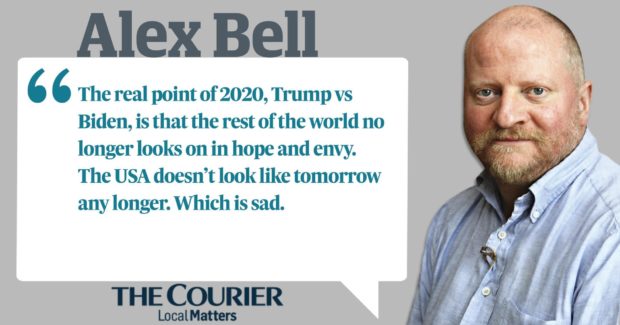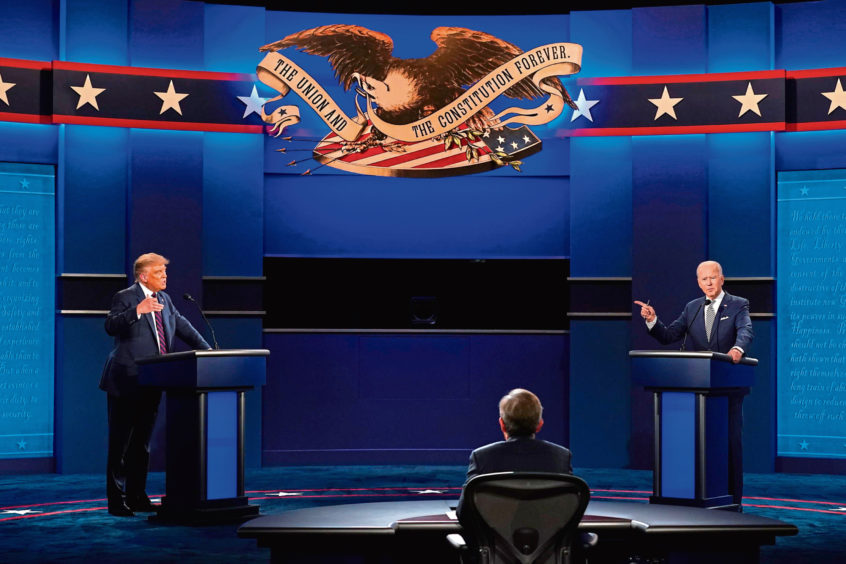As the craziest American presidential election of my lifetime plays out, what does it all mean?
The vice-presidential debate took place last night. In any normal campaign, you could confidently predict this would be dull. In this one, there are no confident predictions. American politics has leapt beyond the normal and into a realm of make-believe. As a result, nobody knows what’s going on.
The Boys On The Bus was the seminal account of reporting on the Presidentials. It described the journalists and politicians as they schlepped around the states seeking votes and stories in the 1972 election.
This confirmed what was already true, that covering the race to be president was a journalist’s rite of passage, an assignment for real hacks.
The world attention was rapt not just because the job of leader of the free world was at stake, but for the razzmatazz. This was politics as showbusiness, democracy as a Broadway opening. America had TV debates, candidates with glistening teeth, a lexicon of sexy jargon and a score sheet of polling information long before the UK.
If you wanted to know what modernity felt like, you looked to America. With it we got a new industry: the talking head, the analyst, the ex-staffers on call to offer bias. A new class of media performer arrived in order to fill aeons of broadcast time – the expert.
Thus we are used now to presidential candidates saying one brief remark and the media putting that on repeat, across countless TV, radio, print and online platforms, to be ‘analysed’. There is way more analysis than substance. So much so, the analysis has become the substance. This was fine, and fun, for so long as everybody followed the rules. But Trump doesn’t. “Grabbing” women was clearly against the unwritten rules, so was hiding tax returns, and intimidating Hillary Clinton in the 2016 TV debates. In previous years any one of these would have damaged a candidate. Not Trump.
His presidency has continued in this unpredictable vein. On any day Trump does or says something that tarnishes the office he holds. But he is still in office, despite having insulted the military, the FBI, the courts, black people, a lot of white people, the whole Mexican vote, all women. This campaign is no different. An awful TV debate, the tax reports leaked, the president ill from a virus he denied. But he’s still in with a shout.
Voter behaviour
Which tells you that analysis, and particularly earnest democrat or liberal European analysis, isn’t up to much. It fills space and time, but provides little substance. American voters, like English ones who voted for Johnson, like the non-conformity of the person and they dislike central government. They don’t care about The Boys On The Bus.
So what is this election actually about?
Obviously it’s about who is the next president. A coin toss between two unimpressive men. Is Trump more dangerous than Biden? It’s not clear. He sounds more dangerous, but so what! Four years have shown us that Trump’s bark is worse than his barnet. I’m not convinced that Biden under pressure is more dependable. As for social policy, the endless to and fro on health care will move a bit in one direction or other, but America has been debating this since the Clinton presidency, and experience shows whatever the president’s aim, the issue gets diluted in Congress.
Will Biden be kinder to China? Why should he? Less chummy with Russia? Probably. More friendly to Europe? US foreign policy on Britain and the EU has not shifted in decades. Both Trump and Biden will see Brexit purely in trade terms.
Will either greatly affect the fundamental issue of American violence? Two elderly white men doesn’t seem like an answer to profound racial injustice. Neither will either change the weird gun laws.
Social media and the election
Then there is the election itself. Since social media, elections are fought in a million personalised messages unseen by journalists. The truth of 2016 was that Facebook algorithms were far more important to the outcome than the traditional campaign trail. To get the real analysis you need to be sitting in an office in San Francisco reading data about online activity. Not so much fun, not so tough, but a better insight.
Thus modern politics, as led by America, is about some kind of popular drama which could lead anywhere – climate catastrophe, civil war, nuclear strike – but which probably won’t because the candidates like to talk, but don’t really want the effort of doing anything big. Which rather mirrors the population at large.
The big story is about how unhappy America is with itself. Divided over race, religion, woke and conservative, it is two nations in one country. While this echoes in the campaign, nobody involved expects the result to have much bearing on the condition of the country.
Perhaps the real point of 2020, Trump versus Biden, is that the rest of the world no longer looks on in hope and envy. The USA doesn’t look like tomorrow any longer. A lesson in what not to do. Astonishingly, America now elicits horror and pity. Which is sad.




